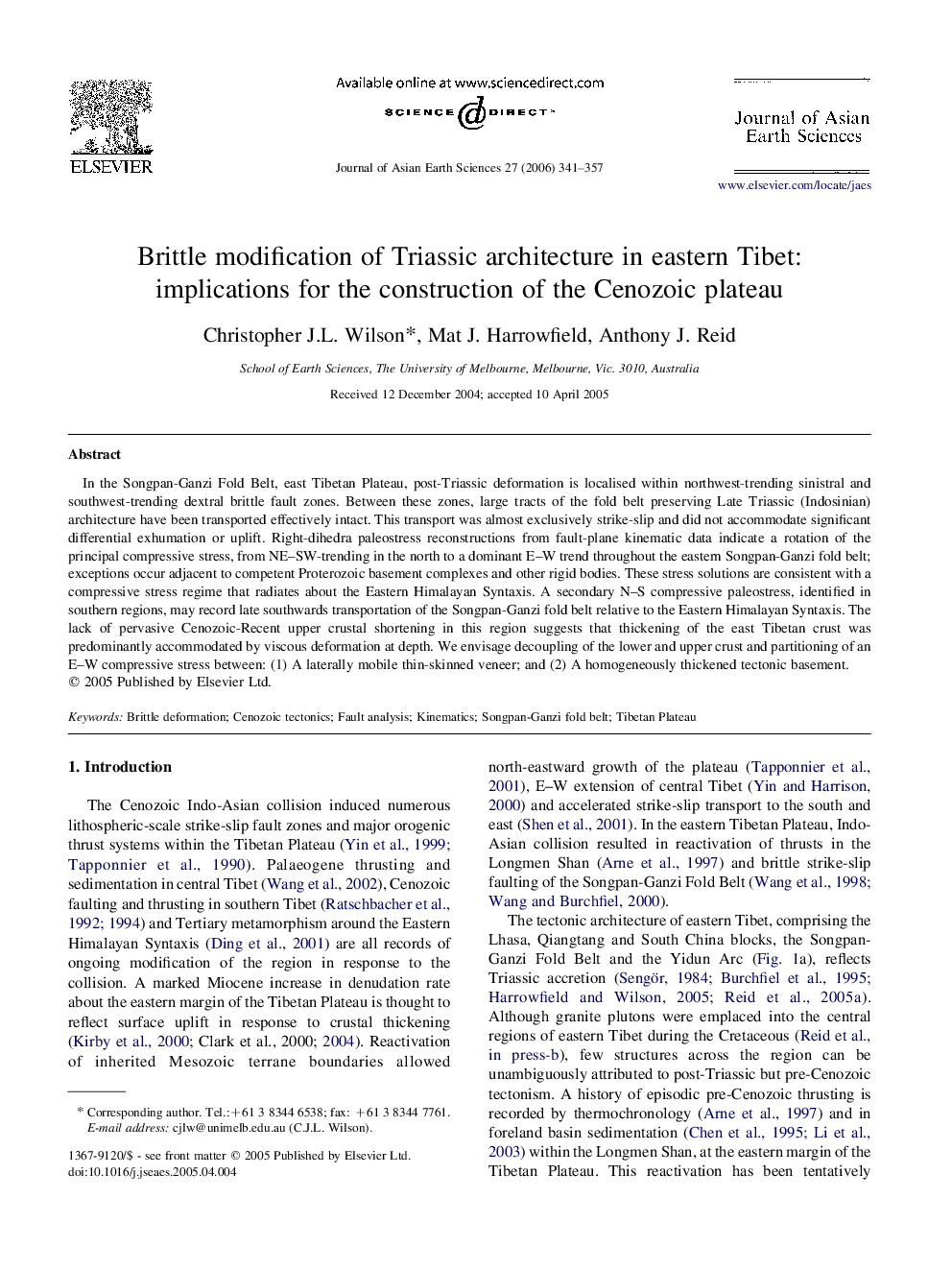| Article ID | Journal | Published Year | Pages | File Type |
|---|---|---|---|---|
| 4732893 | Journal of Asian Earth Sciences | 2006 | 17 Pages |
In the Songpan-Ganzi Fold Belt, east Tibetan Plateau, post-Triassic deformation is localised within northwest-trending sinistral and southwest-trending dextral brittle fault zones. Between these zones, large tracts of the fold belt preserving Late Triassic (Indosinian) architecture have been transported effectively intact. This transport was almost exclusively strike-slip and did not accommodate significant differential exhumation or uplift. Right-dihedra paleostress reconstructions from fault-plane kinematic data indicate a rotation of the principal compressive stress, from NE–SW-trending in the north to a dominant E–W trend throughout the eastern Songpan-Ganzi fold belt; exceptions occur adjacent to competent Proterozoic basement complexes and other rigid bodies. These stress solutions are consistent with a compressive stress regime that radiates about the Eastern Himalayan Syntaxis. A secondary N–S compressive paleostress, identified in southern regions, may record late southwards transportation of the Songpan-Ganzi fold belt relative to the Eastern Himalayan Syntaxis. The lack of pervasive Cenozoic-Recent upper crustal shortening in this region suggests that thickening of the east Tibetan crust was predominantly accommodated by viscous deformation at depth. We envisage decoupling of the lower and upper crust and partitioning of an E–W compressive stress between: (1) A laterally mobile thin-skinned veneer; and (2) A homogeneously thickened tectonic basement.
